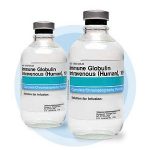Contents
- 1 Steroid Drug Withdrawal
- 1.0.1 What are steroid withdrawal symptoms?
- 1.0.2 How do you taper off steroids?
- 1.0.3 What tests do doctors use to diagnose steroid withdrawal?
- 1.0.4 Which types of specialists treat steroid withdrawal symptoms?
- 1.0.5 What is the treatment for steroid withdrawal?
- 1.0.6 What is the prognosis of steroid withdrawal?
- 1.0.7 Can you prevent steroid withdrawal?
- 1.0.8 From
Steroid Drug Withdrawal
Research by Edward Calvin Kendall at the Mayo Clinic led to a Nobel Prize in 1950 for the medical use of cortisone. Cortisone is a synthetic corticosteroid that mimics cortisol, an anti-inflammatory hormone produced naturally by the adrenal glands. These synthetic corticosteroid drugs (such as prednisone and prednisolone) have since been widely used to treat many conditions, including:
- allergic reactions
- asthma
- rheumatoid arthritis
- inflammatory bowel disease
However, there are serious side effects associated with corticosteroids. Two concerns include side effects from continuous, long-term use of the drug and symptoms caused by changes in hormone secretion.
Symptoms resulting from an imbalance of hormone secretion typically occur when patients take doses higher than the body’s natural production (around 7.5 mg of prednisone per day). Withdrawal symptoms may occur when patients start to decrease or discontinue the dose. Therefore, corticosteroids are typically prescribed for the shortest possible time.
Short-term use of corticosteroids is generally safe and effective in treating various conditions, without inducing withdrawal symptoms.
What are steroid withdrawal symptoms?
Withdrawal symptoms usually occur after extended use of steroids when the drug is abruptly discontinued. These steroids can be glucocorticoids or anabolic steroids in topical, injectable, or transdermal forms. The following symptoms may appear in individuals withdrawing from steroids:
- Weakness
- Fatigue
- Decreased appetite
- Weight loss
- Nausea
- Vomiting
- Diarrhea
- Abdominal pain
- Low blood pressure (hypotension)
- Dizziness or fainting
- Low blood sugar (hypoglycemia)
- Menstrual changes
- Joint pain
- Skin changes
- Muscle aches
- Fever
- Mental changes
- Elevated calcium levels
Dehydration and electrolyte imbalances may also occur, as well as a decrease in gastrointestinal contractions, leading to dilation of the intestine (ileus). However, these symptoms can also be associated with other medical problems.
How do you taper off steroids?
Over time, researchers have discovered that the amount of corticosteroids needed to suppress the hypothalamic-pituitary-adrenal axis (HPAA) varies from person to person. Corticosteroids inhibit this mechanism, causing the HPAA to "hibernate." To allow the adrenal glands to recover their normal patterns of secretion, the drug should not be stopped abruptly. Tapering the drug gradually is necessary. The speed of tapering depends on the control of the underlying disease and the body’s adjustment to producing its own hormones. If everything goes well, a tapering period of 4 to 6 weeks is reasonable. However, tapering may not always prevent withdrawal symptoms entirely. Steroid withdrawal can involve physiological dependence on corticosteroids, which makes it difficult to determine the true cause of a patient’s symptoms. Restarting or increasing the dosage may be necessary in some cases.
Taking steroids every other morning allows for natural stimulation of the hypothalamus and pituitary glands and is ideal when the disease is under control. The development of new steroids that decrease the risk of side effects and HPAA suppression is still uncertain.
All patients exposed to steroid therapy, even for a short time, should assume that their HPAA function has diminished. Patients who have taken steroids and notice unusual symptoms should notify their doctor. It is important to have a list of all medications in case of emergency, especially if steroid therapy has recently been stopped. Supplementation may be needed during periods of stress, up to a year after discontinuing corticosteroid therapy.
What tests do doctors use to diagnose steroid withdrawal?
Diagnosing steroid withdrawal can be challenging due to varied and nonspecific symptoms. Having a thorough history and physical examination is key, with a focus on medications, including recent discontinued steroid usage. Patients can assist in the diagnosis by informing their doctors about recent steroid cessation. Additional tests that may contribute to the diagnosis include cortisol level, serum calcium level, complete blood count (CBC), electrolyte levels, blood urea nitrogen (BUN) level, and creatinine level.
Which types of specialists treat steroid withdrawal symptoms?
In addition to primary care physicians and internal medicine specialists, endocrinologists, addiction specialists, emergency physicians, hospitalists, and hospital-based pharmacists can treat steroid withdrawal.
What is the treatment for steroid withdrawal?
Steroid withdrawal is typically treated by gradually decreasing the amount of steroids administered to reduce or eliminate withdrawal symptoms. The weaning time varies depending on factors such as the patient’s symptoms, the type of steroid, and the patient’s compliance. Some patients may require temporary increases in steroid dosage during withdrawal when faced with stressful conditions like emergency surgery.
What is the prognosis of steroid withdrawal?
If recognized and treated promptly, the prognosis for steroid withdrawal is generally good. However, if complications arise due to electrolyte abnormalities, dehydration, or noncompliance with treatment protocols, the prognosis may worsen.
Can you prevent steroid withdrawal?
Preventing steroid withdrawal is possible by using steroids conservatively and for the shortest duration necessary. Tapering the dose over time can often prevent withdrawal symptoms.
From
Mental Health Resources
- Bipolar Assessment: Can You Do More?
- Mental Health & STIs: What’s the Link?
- Navigating Life With Inoperable Lung Cancer


